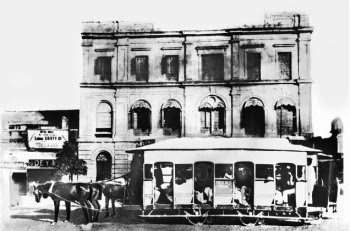Do you really feel you got the job ‘coz you shaved the best out of all the other candidates? Why should we shave in the first place?
“Bhai, tere se pehle shave kar lu, date pe jana hai”. I had been waiting for my haircut at the salon for over half an hour when this gentleman pleaded to take my turn on the barber’s hot seat. I nodded an aye. Well his fifteen minutes on the chair seemed like an era while he was blabbering about his Valentine’s Day plans with the barber, till he accidently got a nick and was advised to STFU. I couldn’t help The-Sheldon-Cooper smirk [sic] on my face.
I wonder who was the Father of the socially retarded custom of Shaving! Why do we need to shave?
Men have always had the beard since prehistoric times, then a necessity but even after the advent of the razor, men continue to sport their facial hair with pride. However, the earliest popular figurine depicting a man with the clean shaven look was that of Alexander the Great. It is said that he had ordered his men to chop off their manly locks and shave so that they could avoid "dangerous beard-grabbing in combat". Though his conquests are said to have been halted by the Indian King Porus (Puru) who had the beard and Alexander mourned the death of Hephaestion, his closest friend, confidante and controversially his bi-sexual lover for the remaining days of his life. (Not generalizing otherwise, but why are most queer men clean shaven?)
Shaving was made compulsory among US troops during WWI due to the chemical warfare employed on the battlefield, the soldiers had to use gas masks. In order for a gas mask to fit properly, you need to be clean-shaven. Necessity gave way to this anti-economical and unnatural fashion. Well, Saddam has been hanged and I feel there no immediate threat to us as of now. Then why?
Bearded men have always seen as wise, mature and intellectual. The iconic image of Jesus with his shiny full beard, undoubtedly will always look cool. Ain’t it? Brahma, the Hindu god who is revered as the Creator of the Universe is portrayed with a flowing ivory beard. Some religions have a stringent approach which forbids men from shaving. Such individuals have been targeted in so called western countries with constant humiliation and even physical assault only because of their religious practice. Do we expect everyone with a beard hold a placard saying “I have a beard, and I’m not a terrorist!”
Leaving religion aside, how does ones appearance correlate to ones character? Some men may say clean shaven men look well groomed. In that case, women with long hair aren’t well groomed? Some say, it increases your self-confidence. Really? So, that’s the reason God endowed you with facial hair and women were spared.
Our visual media is bombarding us with images of metrosexuality for increasing the sale of their male cosmetic brands. Girls, I ask you. You really think that deodorant or the masculine soap increases his testosterone levels? A well groomed man is one who doesn’t pick his nose or embarrasses you by farting in public. A well groomed man will leave the mirror for you to put on your mascara. A well groomed man is one who wouldn’t waste the fifteen minutes on shaving but spend those precious fifteen minute, looking into your eyes and compliment you, and the money spent to buy you your favourite flowers. If you have found that man, he is a taker!
Happy Valentine’s Day folks.
Don’t forget to “Like” the post & do “Share” if you agree.
© Gaurav Ghosh (2014). Please do not reproduce without prior permission.









+River,+Nashik,+Maharashtra+-+India+1928.JPG)


